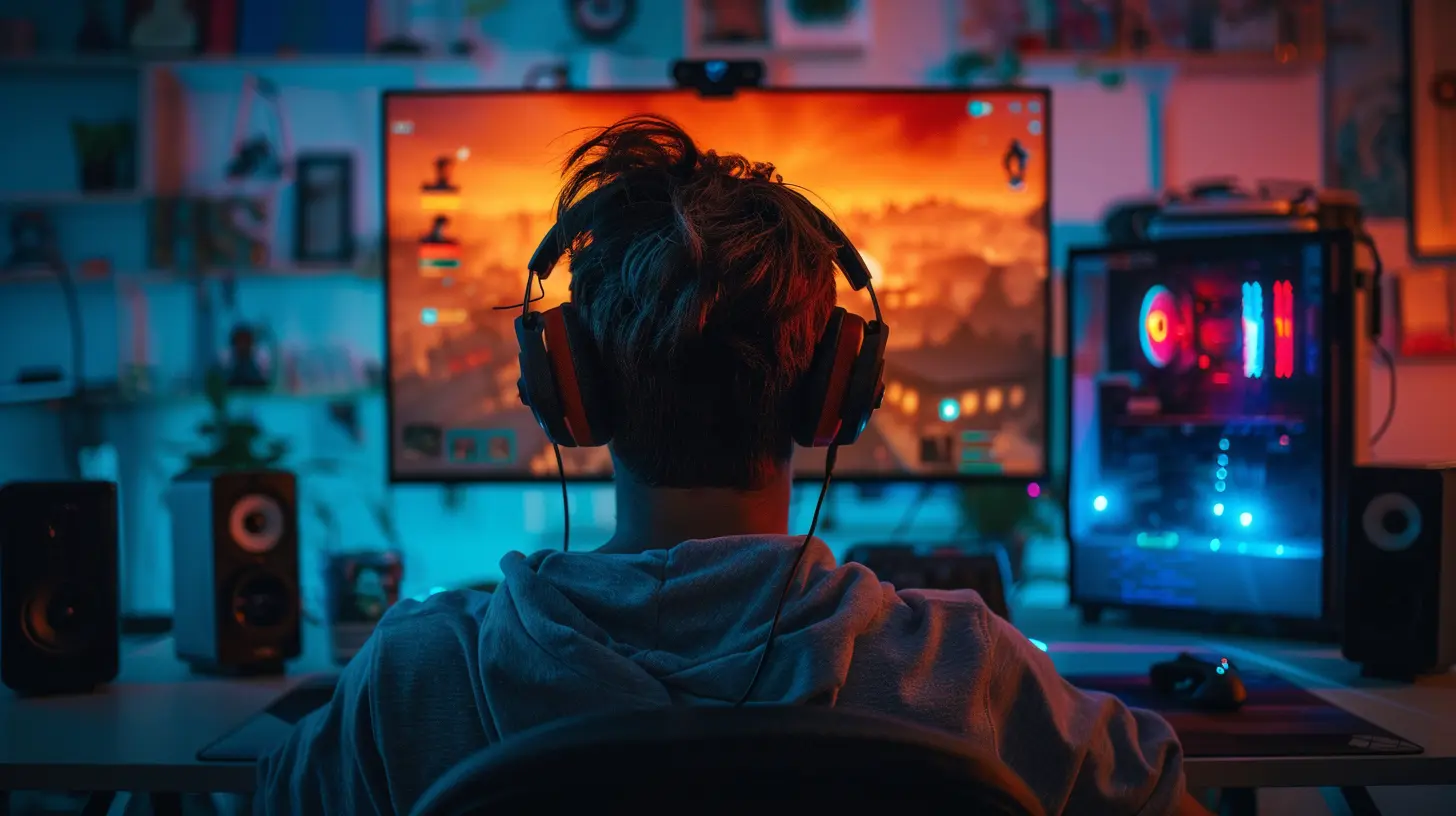The Rise of Second-Screen Gaming with Consoles
11 November 2025
Gaming has come a long way since the days of huddling around a bulky CRT television with your friends to play split-screen on a console. Now, more than ever, we’re multitasking while gaming, and a fascinating trend has emerged: second-screen gaming. What exactly is it? Why is it taking over living rooms across the globe? And, most importantly, what does it mean for the future of our beloved consoles? Let’s dive into the exciting world of second-screen gaming and see how this phenomenon is changing the way we play.
What Is Second-Screen Gaming?
Alright, first things first—what is second-screen gaming? Simply put, it’s when gamers use a secondary device, like a smartphone, tablet, or laptop, alongside their primary gaming console. Think of it as multitasking for the modern player. You’ve probably done it without even realizing it! Ever looked up a walkthrough on your phone while playing Elden Ring or kept up with Twitch chat while streaming your Call of Duty gameplay? Boom—you were second-screen gaming.It might sound like overkill, but here’s the thing: second-screen gaming isn’t just about distractions. In fact, for many, it enhances the overall gaming experience. These additional devices are turning into powerful sidekicks, giving players instant access to guides, stats, in-game maps, and even social interactions. Honestly, it’s like having your own custom-built gaming assistant.
The Roots of Second-Screen Gaming
Second-screen gaming is no overnight sensation. It’s been creeping into our lives for over a decade, slowly but surely. Back in the day, the concept gained steam with systems like the Nintendo Wii U. Remember its gamepad? It looked like a weird fusion between a tablet and a controller. While the Wii U didn’t exactly revolutionize gaming, it planted the seed for what we see today: the idea that a secondary screen can make gaming even better.The true explosion of second-screen gaming, however, came with the rise of smartphones and apps. Once phones got smarter and consoles got more connected, players started using their devices to do everything from managing in-game inventories to chatting with friends via Discord. Sony and Microsoft also caught on quickly. Sony introduced the PlayStation App, while Microsoft pushed the SmartGlass App for Xbox—turning phones into remote controls, information hubs, and more.
Why Is Second-Screen Gaming So Popular?
Okay, so what makes second-screen gaming so appealing? Why are more and more players keeping a second device nearby when they fire up their consoles? Well, there are a bunch of reasons, and they all circle around convenience and connection.1. In-Game Tools Without the Pause
Ever been in the middle of an intense boss fight and needed to check a guide or map? Traditional gaming forces you to awkwardly pause the game or fumble through menus, breaking the immersion. With a second screen, you can just look over at your phone or tablet for the info you need—no interruptions. It’s like having cheat codes without the guilt.2. Social Interaction
Gaming isn’t just about playing anymore—it’s about being part of a community. Whether you’re hopping on Twitter to see what everyone else is saying about the same game or scrolling through Reddit threads for tips, second-screen gaming lets you stay social. Plus, streaming platforms like Twitch and YouTube have made it easy to share and watch gameplay, and keeping a second device handy lets you watch streams, read comments, or even interact with viewers while still gaming.3. Seamless Multitasking
Gamers today are multitasking pros. Maybe you’re grinding through repetitive levels in a game—why not catch up on a Netflix show at the same time? Or perhaps you want to track your favorite esports tournament while playing a quick game of Fortnite. Second-screen setups make this a breeze. It’s almost like being in two places at once (minus the weird time travel stuff).
The Role of Apps in Second-Screen Gaming
Apps are kind of the unsung heroes of second-screen gaming. They’re not just random add-ons—they’ve become essential tools in making the most out of this trend. Let’s take a closer look at some standout apps that have shaped this space:1. Xbox App
The Xbox App is a must-have for any Xbox gamer. Imagine being able to manage your messages, join party chats, and even use your phone as a controller for media playback. It’s all right there in one sleek app, letting you stay connected without ever leaving your couch.2. PlayStation App
Sony’s PlayStation App is another game-changer. Want to see who’s online, download a game to your console remotely, or access your trophies? The PlayStation App has your back. It turns your smartphone into a command center for all things PlayStation.3. Companion Apps for Individual Games
Games like Red Dead Redemption 2 and Destiny 2 have their own companion apps. These aren’t gimmicks—they’re packed with features like interactive maps, inventory management, and quest tracking. They’re basically like carrying a strategy guide in your pocket, but way cooler.Second-Screen Gaming: The Future of Consoles?
Here’s the big question: is second-screen gaming just a trend, or is it here to stay? Judging by the way it’s integrated itself into the gaming ecosystem, I’d say it’s not going anywhere. In fact, it could be the key to the next evolution of consoles.Gamers are demanding more connectivity and convenience, and second-screen gaming offers a perfect solution. Imagine a gaming future where your tablet acts as a live scoreboard in multiplayer matches, your phone syncs with your console for customizable controls, or your smartwatch gives you real-time health updates during gameplay. Crazy, right? But it’s totally within reach.
Plus, as cloud gaming becomes more mainstream (hello, Xbox Game Pass and PlayStation Plus Cloud Streaming), the line between screens is getting blurrier. Eventually, we could see seamless transitions where your progress on the TV carries over to your phone, and vice versa. Second-screen gaming isn’t just a sidekick—it might evolve into the main event.
The Downsides of Second-Screen Gaming
Let’s keep it real, though. Second-screen gaming isn’t all rainbows and unicorns. It has its share of drawbacks, too. For one, it can be downright distracting. There’s a fine line between enhancing your experience and completely zoning out because you’re scrolling TikTok during loading screens.There’s also the risk of information overload. Having too many screens going at once can make gaming feel more like work than fun. And remember, not everyone has the budget for a fancy tablet or the patience to juggle multiple devices.
That said, these challenges are totally fixable. Developers just need to strike that sweet balance between immersion and accessibility. And as gamers, it’s up to us to figure out when second-screen gaming enhances the experience and when it’s better to put the phone down.
Tips for Getting the Most Out of Second-Screen Gaming
Want to hop on the second-screen gaming train but don’t know where to start? No worries—I’ve got you covered. Here are some tips to help you maximize your multitasking:- Choose the Right App: Stick with apps that actually add value to your gaming experience. If a companion app feels like a chore to use, skip it.
- Limit Distractions: Use your second screen wisely. Set boundaries—maybe allocate it for gaming-related stuff only and resist diving into random YouTube rabbit holes.
- Set Up a Smooth Workflow: Position your second screen where it’s easy to glance at, like on a stand or dock. You don’t want to be fumbling with devices mid-game.
- Don’t Overdo It: Remember, gaming is supposed to be fun! If your second screen is pulling you out of the experience, take a step back.
Wrapping It Up
Second-screen gaming is more than just a trend—it’s a natural evolution of the way we interact with consoles and games. Whether it’s to look up tips, chat with friends, or manage in-game inventories, using a second screen has become an integral part of gaming for many players. Sure, it has its challenges, but the benefits far outweigh the downsides.So, the next time you pick up a controller, take a second to glance at your phone or tablet. Chances are, it’s already become a key part of your gaming setup, whether you realized it or not. The rise of second-screen gaming is proof that the way we play is always evolving, and honestly? The future of gaming has never looked more connected—or more exciting.
all images in this post were generated using AI tools
Category:
Gaming ConsolesAuthor:

Lana Johnson
Discussion
rate this article
1 comments
Max Henson
Because juggling devices was always fun!
November 15, 2025 at 5:58 AM

Lana Johnson
Absolutely! Juggling devices adds an extra layer of engagement and excitement to gaming.


